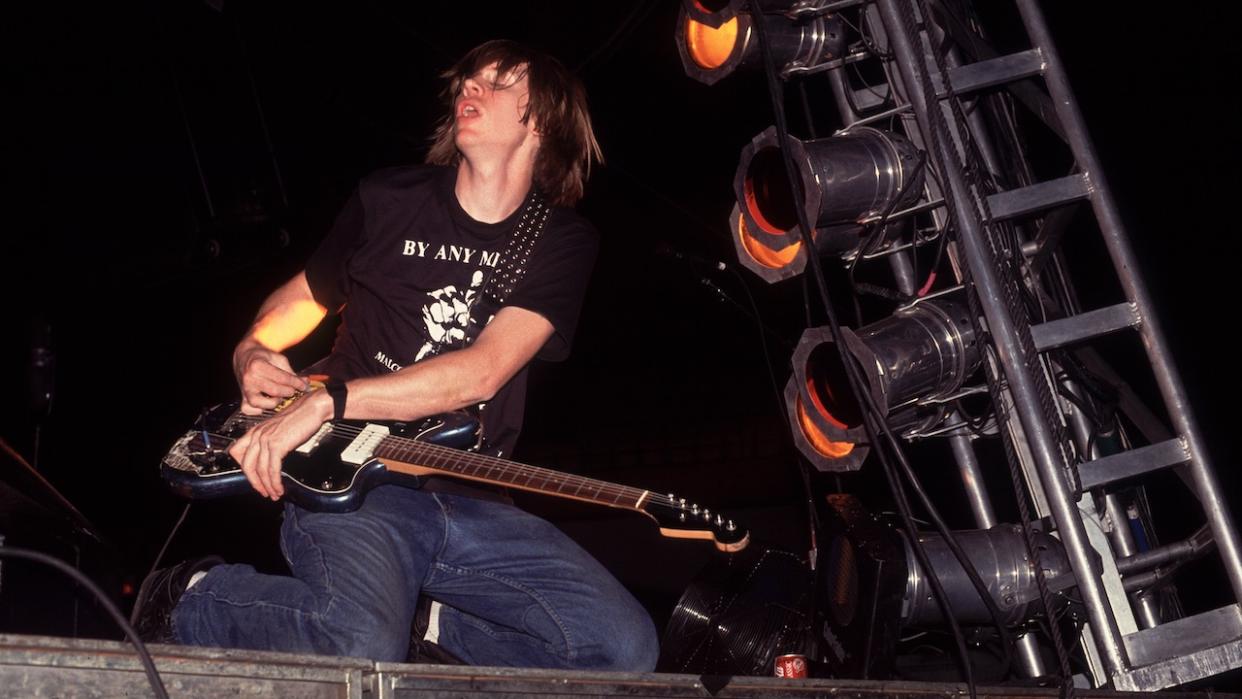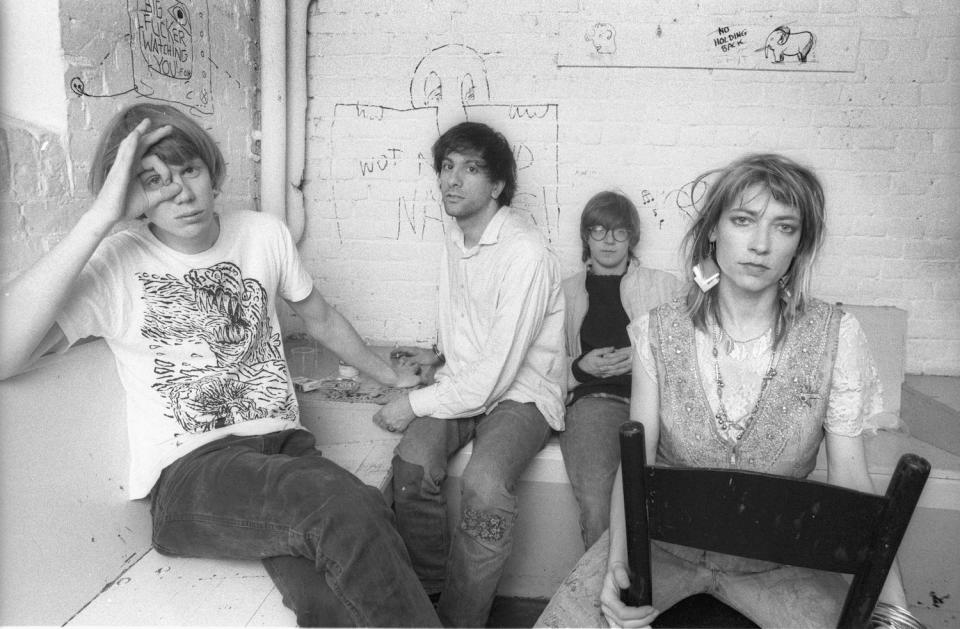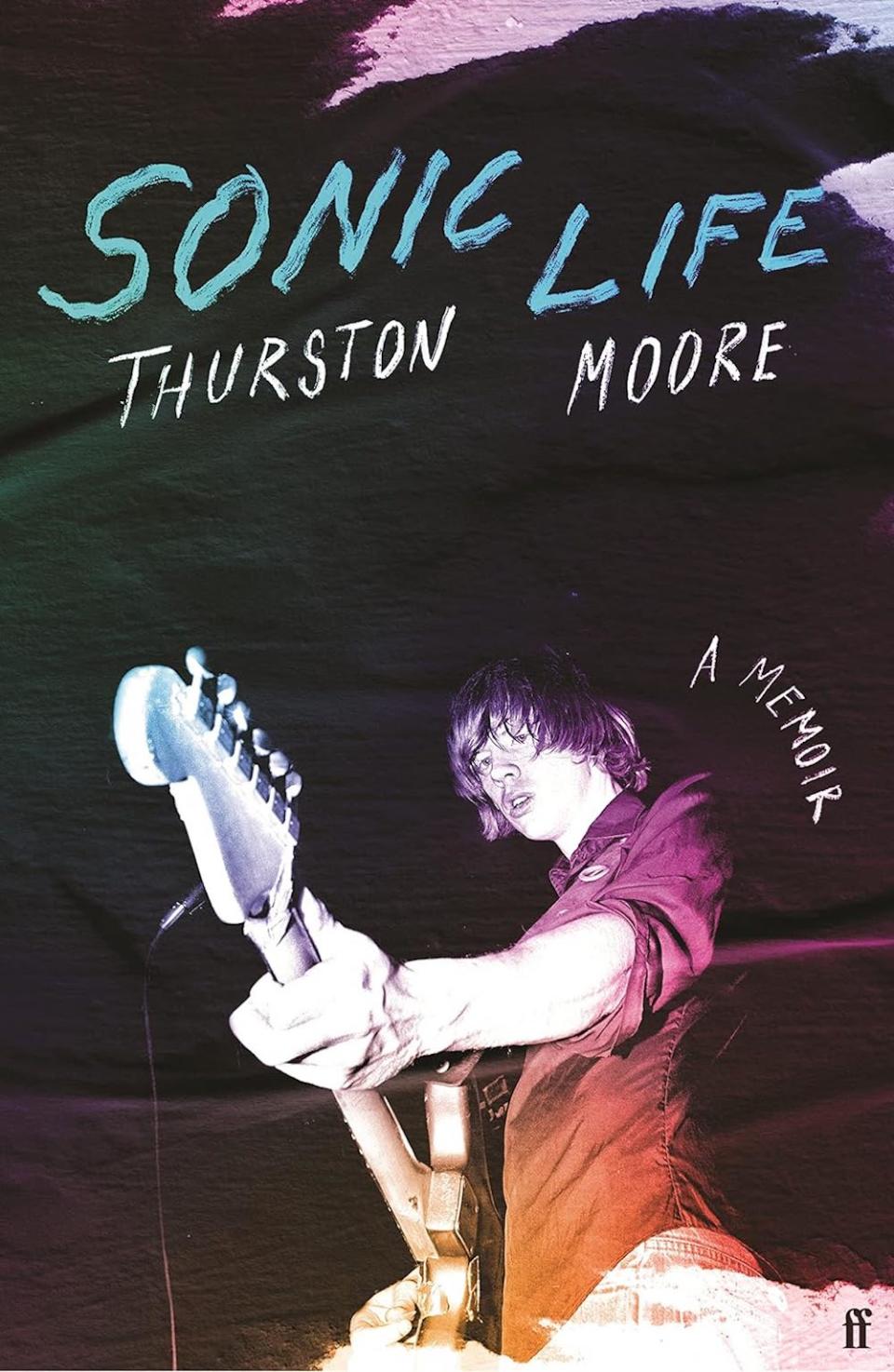"The feeling that chaos was about to erupt was palpable": Thurston Moore's memoir Sonic Life is a fascinating insider account of life-changing outsider art, and one music geek's insatiable lust for the loud

- Oops!Something went wrong.Please try again later.
In the summer of 1975, tourists arriving at New York's airports were met by off-duty police officers handing out pamphlets featuring a hooded skull beneath the words WELCOME TO FEAR CITY. Billed as 'A Survival Guide for Visitors to the City of New York' the leaflet carried stark warnings as to the dangers posed by the most desperate, degenerate citizens of this lawless, godless metropolis, and advised against walking anywhere in the Five Boroughs after 6pm.
It is on these same feral, filthy, corpse-strewn streets that geeky, gangly Connecticut teenager Thurston Moore comes of age, discovers the liberating soundtrack to his life, and then helps create, and disseminate, a musical movement that would change the world.
Moore's autobiography, Sonic Life, is an absolute joy, a memoir populated by misfits and magicians, the dreamers and the demented, full of vivid imagery and fabulous anecdotes, fired by an insatiable appetite for adventure, experiences and new noise. For anyone similarly consumed by music, it offers a fascinating documentation of the genesis and growth of America's alternative rock scene, by one of its key players. It's also an unabashed love letter to New York, in all its messy, chaotic magnificence, and the best book about rock music in the city since Please Kill Me.
That Sonic Life isn't just another rock n' roll memoir, and Moore isn't just a stereotypical rock n' roll musician is illustrated by his motivations for embarking upon his chosen vocation, what he calls "a devotional life in service to rock ’n’ roll."
"Boys have always wanted to be in rock bands to get laid, or so it’s said," he muses. "But that was just not a defining factor for me. To be in a band was to locate and achieve an emotional pleasure charged by an organic, if not spiritual, creative impulse."
Turned onto the sound of over-amplified guitars by his older brother Gene, as a young teenager Moore falls in love with Kiss, Alice Cooper, Slade, Sparks and David Bowie, before finding a portal into the world of punk rock via The Stooges, and their "hypodermic needle of noise", and a tsunami of music magazines (Circus, Creem, Hit Parader, Rock Scene) and Xeroxed fanzines, with names such as Denim Delinquent and Teenage Wasteland Gazette. In their inky pages, Moore comes to view New York as the centre of the universe, home to "the new vanguard of punk rock destruction and creation."
"I wanted in," he writes.
Moore's deep dives into Gotham's underworld are rendered brilliantly, his wide-eyed excitement and hunger for faster, wilder and more transgressive new sounds amped up by every visit to the city's suzziest punk dives. He has his mind blown by Suicide, screams into a mic for the first time at an X-Ray Spex gig, stands beside William Burroughs at a Patti Smith show at CBGBs, and watches in awe as Sid Vicious sparks mayhem at a post-Pistols solo gig, flanked by The Clash's Mick Jones and The New York Dolls' Arthur 'Killer' Kane. ("After the first song a girl yelled 'I love you!' to which Sid responded in his North London street drawl, 'Shut your fucking mouth, you stupid fucking cunt.') The Catholic schoolboy from Connecticut is hooked.
"All the LPs I had owned as a teenager - the ones I’d alternately enjoyed and maligned, by Led Zeppelin, Pink Floyd, Black Sabbath, Yes, ELP - had been relegated to a few crates in the cellar of my mother’s house in Bethel," he writes. "Now it was only the glittering trash of the Bowery for me, fantasizing I might share a few beers with Cyrinda Foxe, Wayne County, Richard Hell, Debbie Harry, or Lenny Kaye."
Inevitably, Moore longs to cross "the sonic threshold" between observer and active participant, and, soon enough, he makes that leap, playing first with The Coachmen, before meeting, in 1980, the woman who will become his soul mate, Los Angeles-born artist and bassist Kim Gordon, and forming the band that will become Sonic Youth.

"Any great musical collective recognizes the intangible magic that occurs when they play together," Moore writes, "creating original colors and dynamics, forging a group personality. Kim and I innately sensed the way we could exchange musical ideas. There was no need for discussion or analysis."
There would, however, be much discussion and analysis of Sonic Youth from the outside as the '80s progressed and the New York quartet, completed by guitarist Lee Ranaldo and, later, drummer Steve Shelley, become - alongside Black Flag, R.E.M., Bad Brains, Hüsker Dü, and more - one of the key players at the vanguard of a nascent fearless and fecund 'underground'/'alternative' rock community. Not everyone gets their oft-kilter, experimental sound - "Sonic Youth is/are dentist drill drone music" reads one dismissive early review, which delights the band so much that they take on the insult as a badge of honour - but their cult appeal and audience grows with every record, with 1988's Daydream Nation, in particular, a huge critical hit and a cornerstone of a fast-growing alt. rock scene. The following year, having heard good reports about the band, Moore travels out to New Jersey to watch another new (ish) band tipped for underground success, Sub Pop act Nirvana, and stands "agape and transfixed" at his first sight of Kurt Cobain's band.
"It took all of an electric flash of a second to see how incredibly beautiful they were and how soul-shredding the music was," he writes, as a mutual love affair is born. "It would soon be clear that Nirvana was articulating something that connected not just with the punks but with the nerds, the freaks, the geeks, the losers, and the weirdos... It was going to be more than just cheap thrills, offering instead a radical reconsideration of musical expression at large."
Seeing Sonic Youth transition from respected indie labels to Geffen subsidiary DGC with their credibility and cool entirely intact, Nirvana would later follow the New York-based band to the major label, for the release of their second album Neverrmind. After which, famously, punk rock 'broke', and 'alternative' rock suddenly became the mainstream in America and beyond. When Sonic Youth's Dirty album is released in 1992, it peaks at number 6 in the UK, and lands the band an invitation to make their US network TV debut on David Letterman's late night talk show. Whether Letterman's audience was ready to see a man (Lee Ranaldo) scraping a baseball bat along a guitar fretboard before tumbling onto the studio floor alongside Moore we shall never know.
Those familiar with Sonic Youth's story will know that their noise-rock fairytale ended somewhat acrimoniously when Moore fell newly in love with book editor Eva Prinz, and he and Gordon split up in 2011, after 27 years as husband and wife.
Gordon detailed the break in painful detail in her own acclaimed memoir, 2015's Girl in a Band, Moore is more discreet, or perhaps more embarrassed: though his intentions may be pure when he writes that the circumstances behind the split were "intensely personal, and I would never capitalize on them publicly, here or anywhere", it feels somewhat self-serving, and something of a cop-out when he's been so forensic in laying out other key moments in his life across 495 pages. Gordon's own epitaph for a relationship previously held up as a model of pure love was savagely succinct: “Midlife crisis, starstruck woman,” she told Elle magazine in 2013. Ouch.
Whether out of respect for his ex, or for his own reasons, Moore's memoir concludes before he moves to London to live with Prinz, and he draws a line under the matter with the prosaic line, "We would, in time, become husband and wife." Maybe in time we'll see a sequel detailing his dozen years working out of the UK: if so, he'll have a hell of a task trying to top what he achieves here, in one of the most literate and engaging rock memoirs ever penned.

Sonic Life is published by Faber & Faber and is available to buy now.

